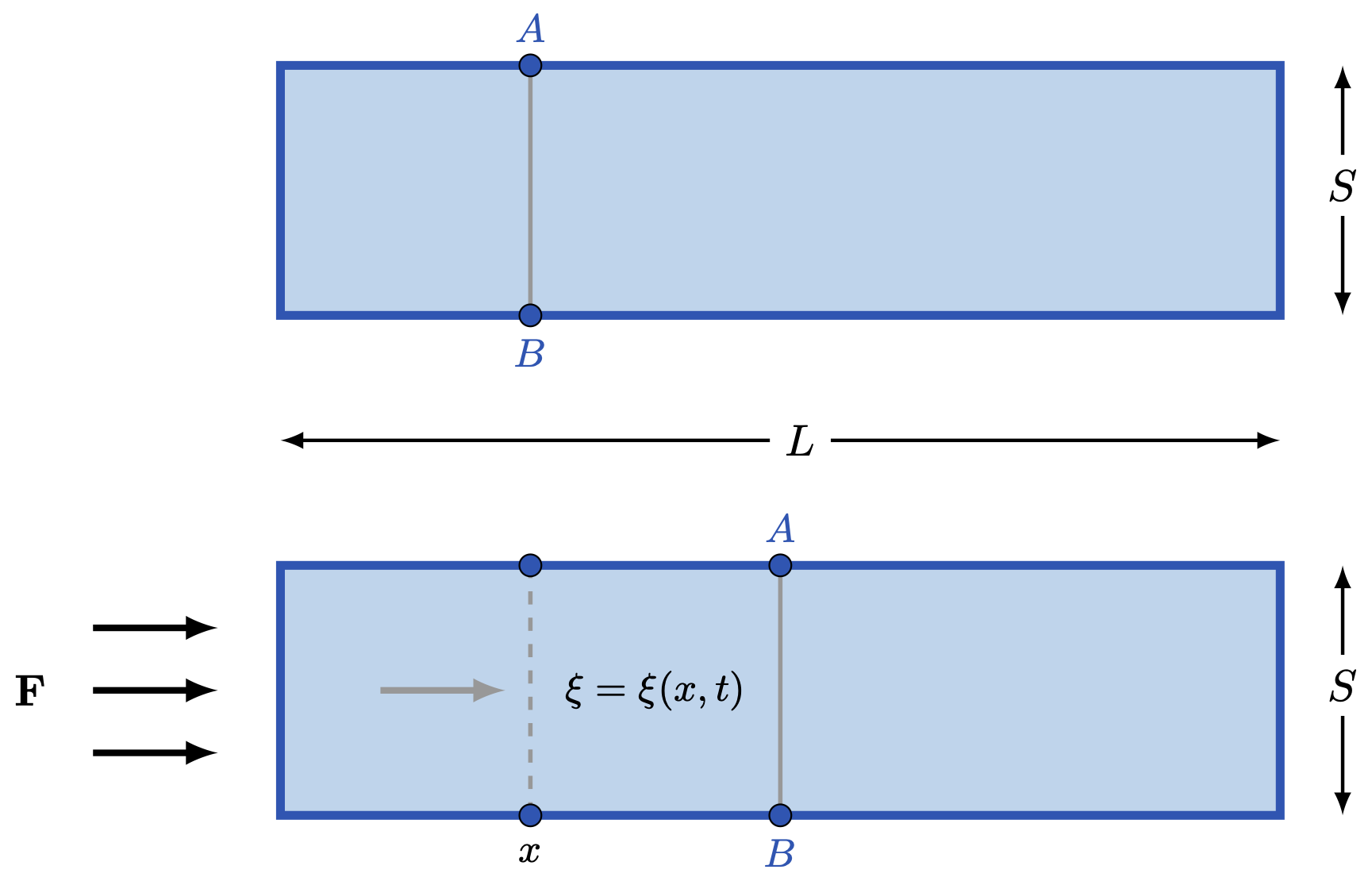Edit and compile if you like:
\documentclass{standalone}
%Drawing
\usepackage{tikz}
\tikzset{>=latex}
\usetikzlibrary{calc}
%Notation
\usepackage{physics}
% Colors
\definecolor{blue1}{rgb}{0.0, 0.33, 0.71}
\definecolor{blue2}{rgb}{0.29, 0.59, 0.82}
%Newcommand
%Newcommand
%%Midline Label
\newcommand{\midlinelabel}[3]%
{
\node (midlabel) at ($ (#1)!0.52!(#2) $) {#3};
\draw[<-,thick] (#1) -- (midlabel);
\draw[->,thick] (midlabel) -- (#2);
}
\begin{document}
\begin{tikzpicture}
% Grid
% \draw[line width = 0.05] (0,0) grid (12,12);
% Bottom Rectangle
\draw[line width = 2, blue1, fill = blue2!40] (3,1) rectangle (11,3);
% Upper Rectangle
\draw[shift = {(0,4)}, line width = 2, blue1, fill = blue2!40] (3,1) rectangle (11,3);
% Gray Lines
%% Bottom
\draw[line width = 1.5, black!40, ->] (3.8,2) -- +(1,0);
\draw[line width = 1, black!40, dashed] (5,1) -- +(0,2);
\draw[line width = 1, black!40] (7,1) -- +(0,2);
%% Top
\draw[line width = 1, black!40] (5,5) -- +(0,2);
% Points
%% A and B
%%% Bottom
\foreach \x in {0,2}
{
\draw[shift = {(0,\x)}, fill=blue1] (7,1) circle (2.5pt);
}
%%% Top
\foreach \x in {0,2}
{
\draw[shift = {(0,\x)}, fill=blue1] (5,5) circle (2.5pt);
}
%% Bottom Points Above x
\foreach \x in {0,2}
{
\draw[shift = {(0,\x)}, fill=blue1] (5,1) circle (2.5pt);
}
% Nodes
\node at (5,0.7) {\small$x$};
\node at (1,2) {$\vb{F}$};
\node[blue1] at (7,0.7) {\small$B$};
\node[blue1] at (7,3.3) {\small$A$};
\node at (6,2) {\small$\xi = \xi(x,t)$};
\node[blue1] at (5,4.7) {\small$B$};
\node[blue1] at (5,7.3) {\small$A$};
% L line
\midlinelabel{3,4}{11,4}{$L$}
% Force Vectors
\foreach \x in {0,1,2}
{
\draw[shift = {(0,0.5*\x)}, line width = 1.5, ->] (1.5,1.5) -- ++(1,0);
}
% S Lines
\midlinelabel{11.5,1}{11.5,3}{$S$}
\midlinelabel{11.5,5}{11.5,7}{$S$}
\end{tikzpicture}
\end{document}
Click to download: rod-oscillation.tex
Open in Overleaf: rod-oscillation.tex
This file is available on GitHub.
See more on the author page of Alexandros Tsagkaropolulos.


